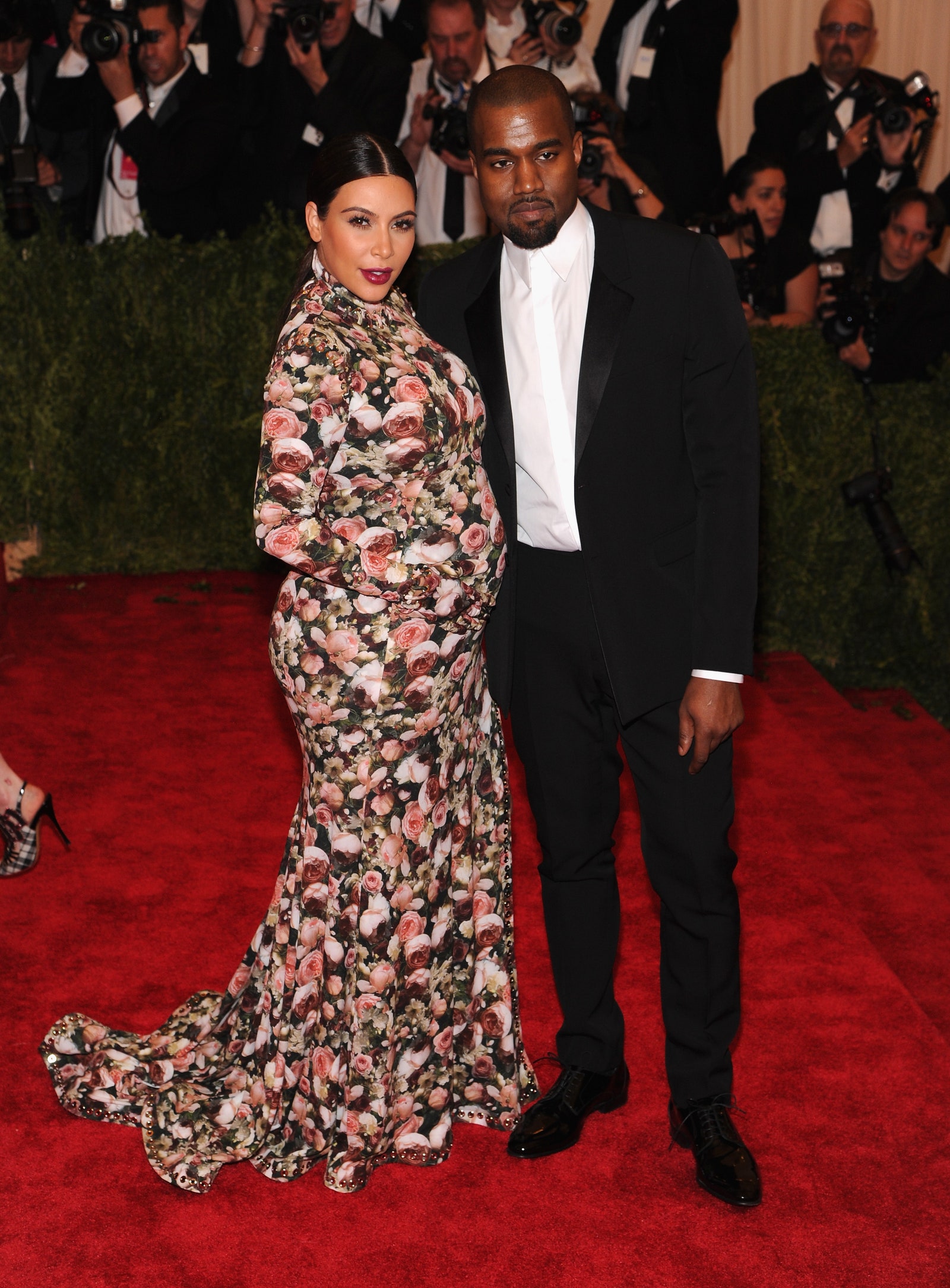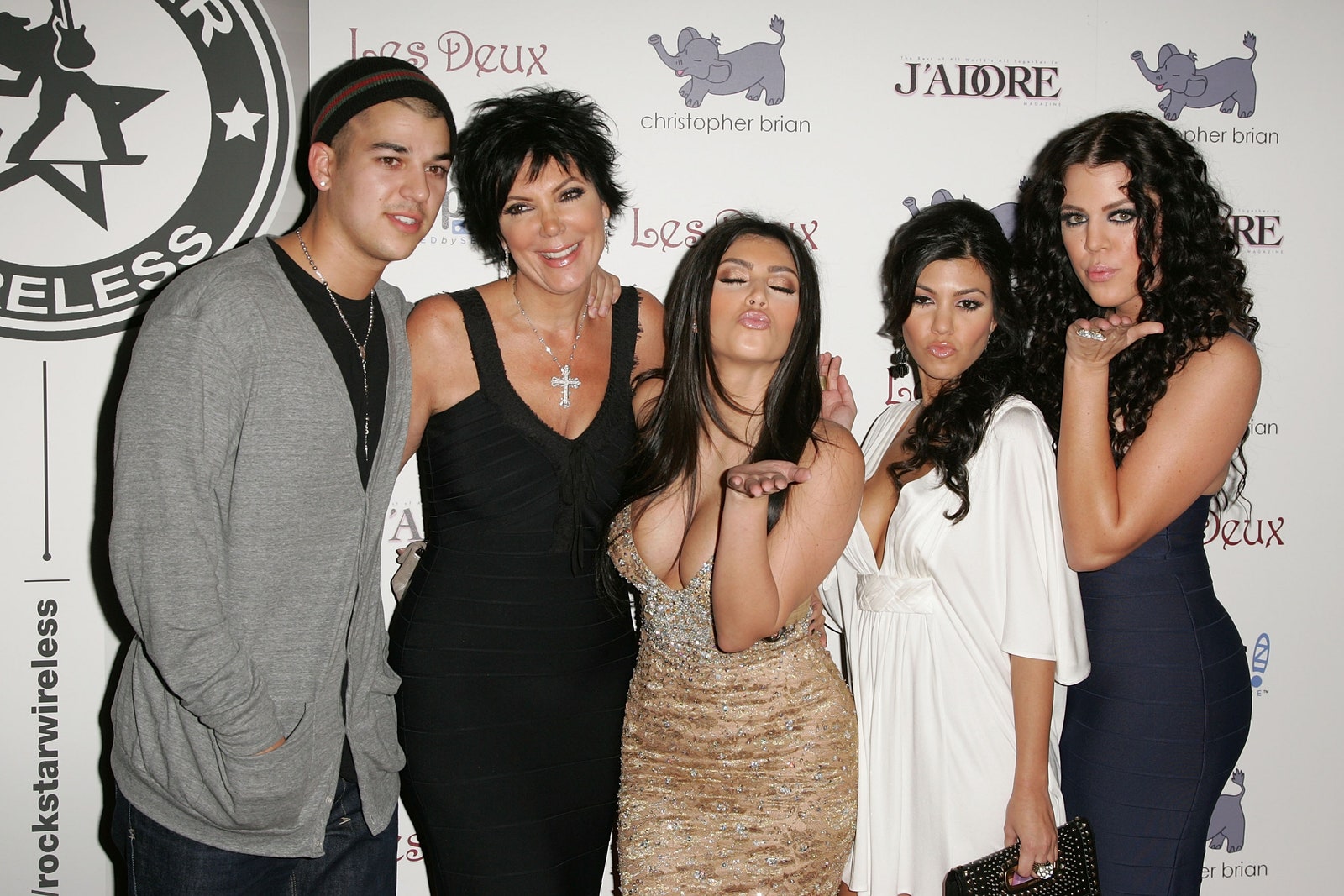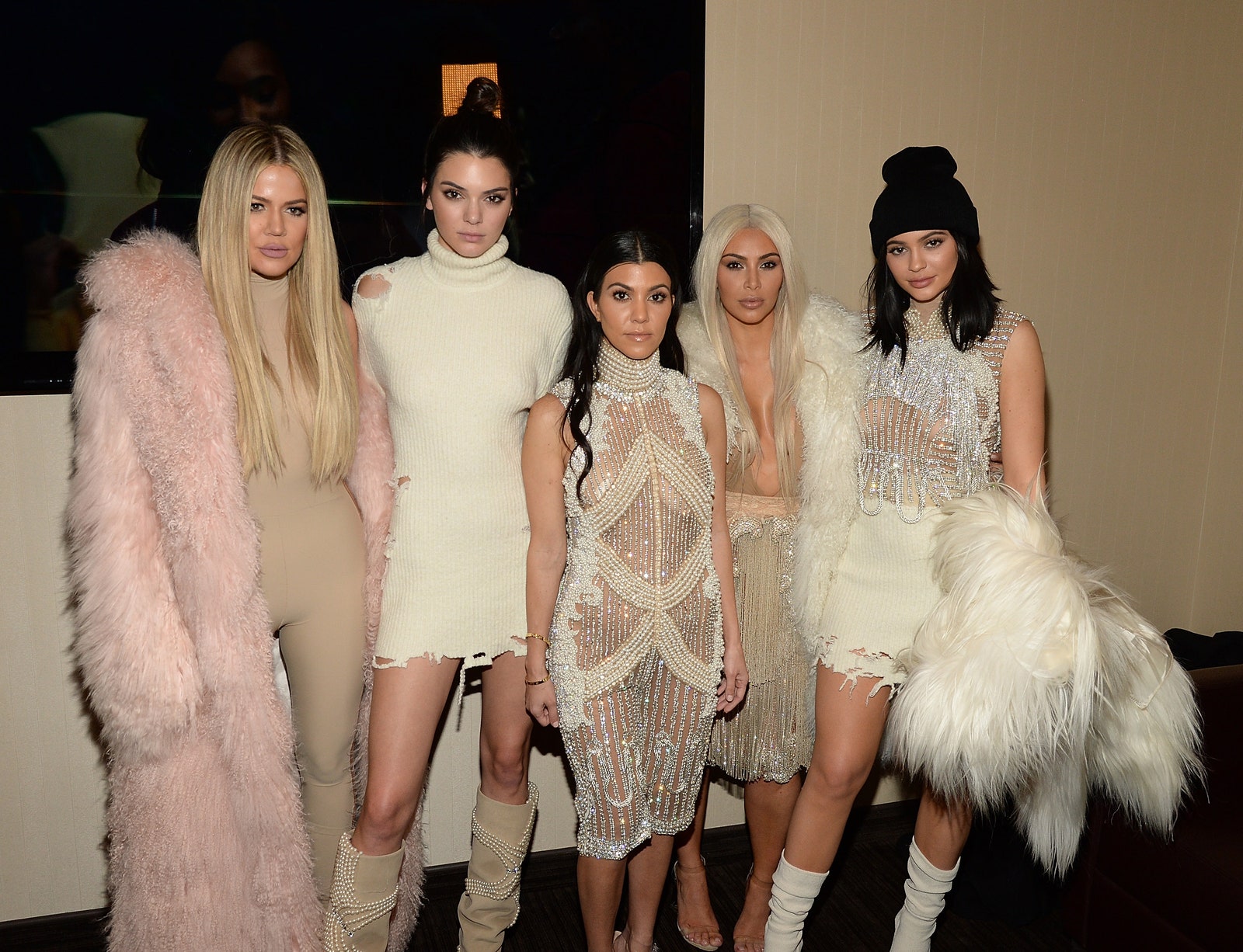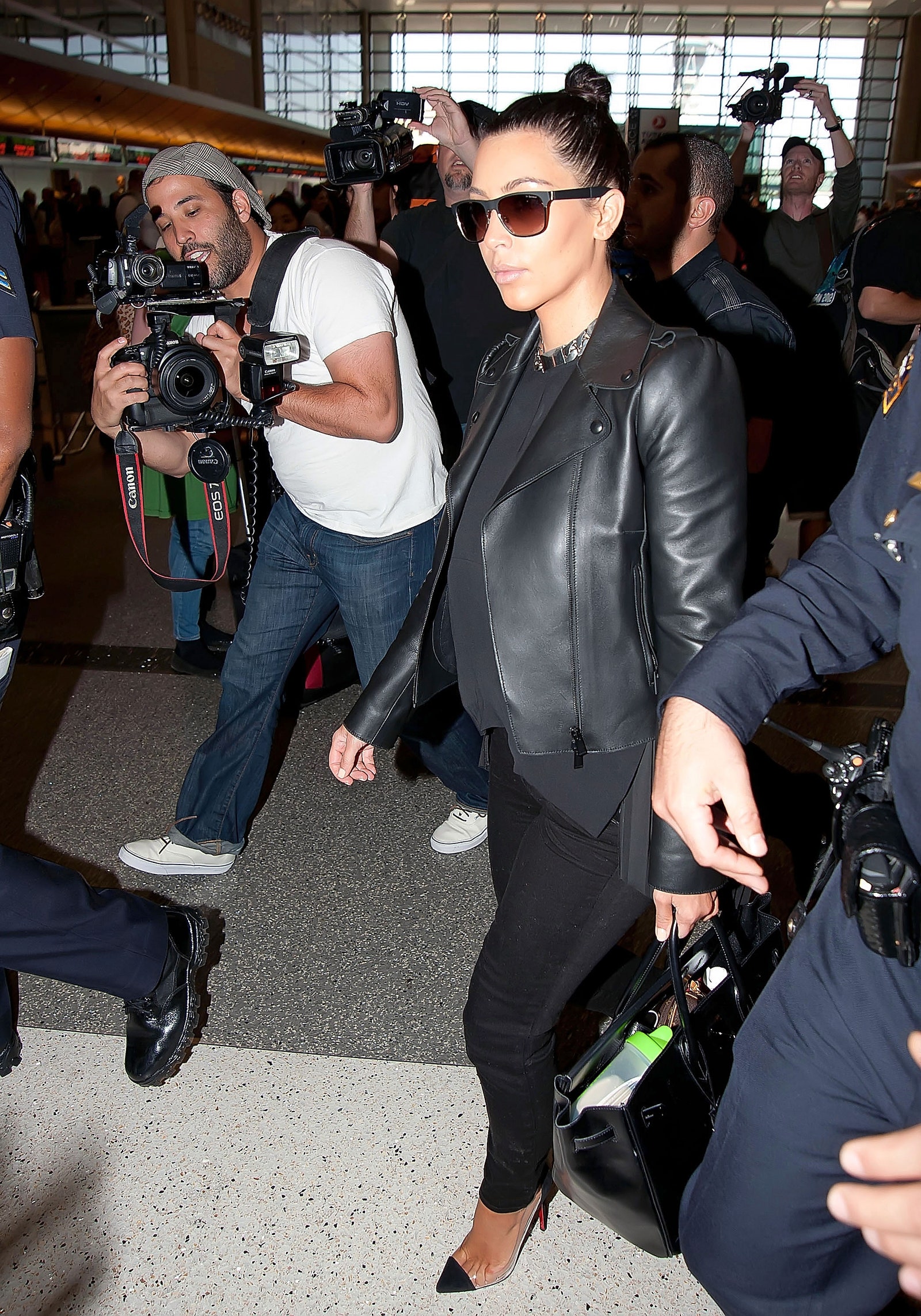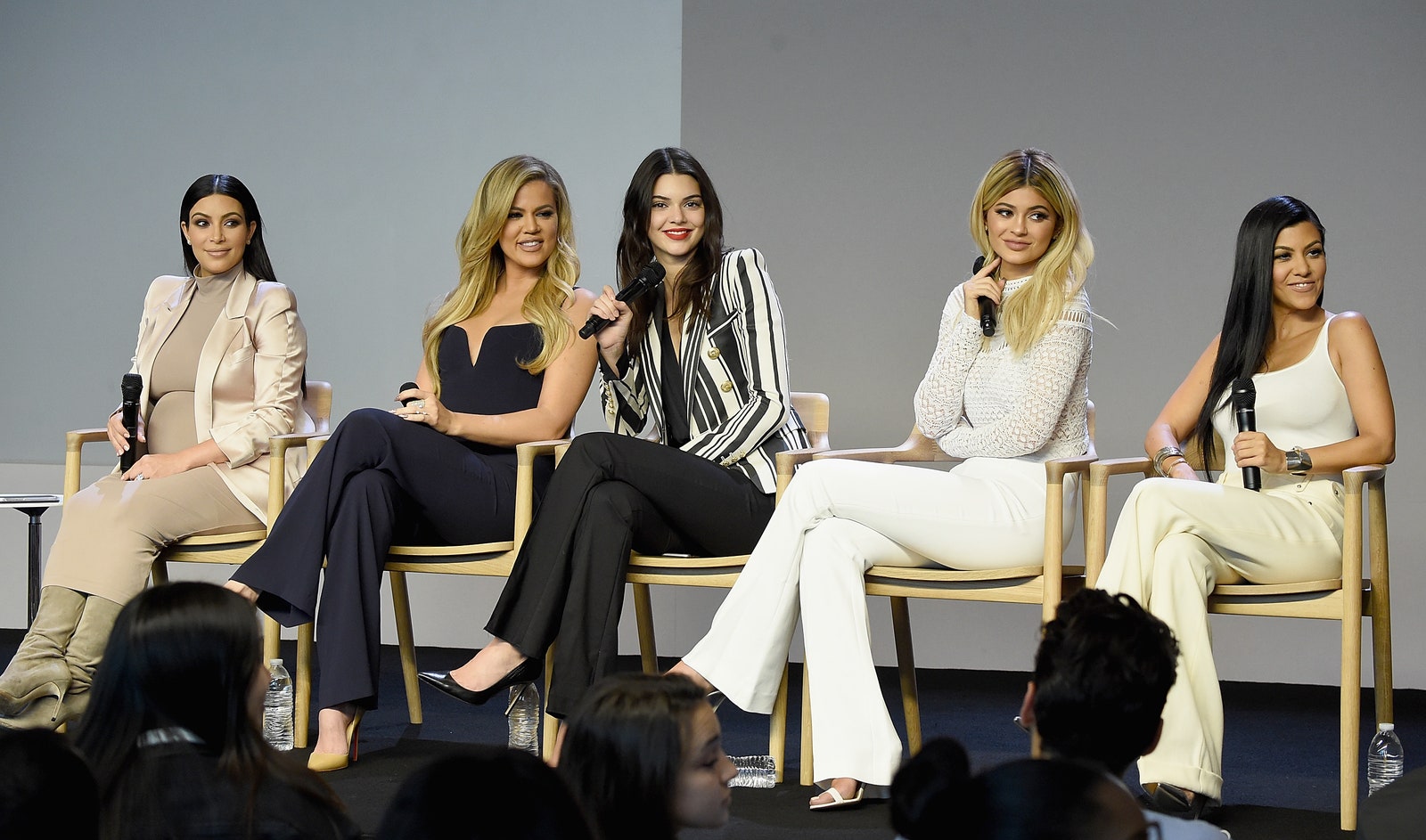Love them or hate them, there's no denying this family's impact.

'Keeping Up With the Kardashians' Began as a Reality Show. It's Ending as So Much More.
Kim Kardashian went viral after 2013's Met Gala for all the wrong reasons. At the time, she was mostly known for her diamond-earring meltdowns on Keeping Up With the Kardashians and a 72-day marriage to basketball player Kris Humphries. But the social media-savvy star was on the verge of rehabilitating her image, and she had just the dress to do it. Enter: A floral Givenchy gown by designer Riccardo Tisci, whose pieces are worn like haute-couture medals of honor. Tisci was already dressing Kim's then-boyfriend Kanye West for the event so he styled her too, as a favor. The point being, Kanye was seen as the guest of honor that night, and Kim was his plus-one.
But this dress had the potential to change things. Sophisticated, unexpected—it was a far cry from the typical bodycon aesthetic Kim and her sisters embraced. To say she had a lot riding on it would be an understatement. If the dress made the right kind of splash, fashion's elite might finally see past her reality show—or even more so, the sex tape—and anoint her.
That didn't happen—not then, at least. Instead, the dress was meme-ified: mocked and gawked on every corner of the internet, likened to a grandmother's poorly-upholstered couch and Mrs. Doubtfire's '90s frocks. The splash Kim intended fully capsized.
But the tides turned not even a year later. Kanye and Kim kept dating, and his position as fashion royalty categorically boosted the Kardashian-Jenner brand. Pair this with social media’s rise—which Kim ignited one selfie at a time—and she suddenly held all the cards. She was no longer written off as just a reality star but a bonafide phenomenon with real influence.
Kim and Kanye at the 2013 Met Gala.
Jamie McCarthy/Getty ImagesVogue took notice, and for its April 2014 issue put her and Kanye on the cover. It was the ultimate seal of approval: Kim had at last reached the upper-echelons of fashion's glitterati, and she did it wearing a Lanvin wedding gown.
We quite literally watched her star materialize—and not in the way we’ve seen other celebrities ascend through interviews, talk-show appearances, and convoluted Oscars speeches. Kim’s journey from D-list wannabe to fashion icon to multi-hyphenate has been painstakingly documented on Keeping Up With the Kardashians, which ends its 14-year run on June 10. After a decade-plus, it’s become more than just a reality show. It’s a vehicle, a vessel, a laboratory experiment that asked an intriguing question: Could a relatively-anonymous family reach pervasive, supersonic fame just from living their lives? And what would happen if millions followed that journey? Think The Truman Show coated in pink lip gloss.
“If you’ve been watching the Kardashians from the very beginning, you understand what it means for Kim to be the guest of honor at the Met Gala,” says Emma Diamond, co-founder of Comments by Celebs. “Because you know what it was like when she was taken so non-seriously, when she was made a complete fool. If you're somebody who’s been watching from the beginning, it's almost as if you feel this shared sense of pride with them.”
Whether you feel pride for the Kardashians—or elation or anger or amusement—there’s no denying you feel something. When Keeping Up With the Kardashians premiered in 2007, it was just your standard, family-centric reality fare; nothing we hadn’t already seen with The Osbournes. Unlike that series, though, the Kardashians managed to stay in public consciousness.
The family in 2007.
Noel VasquezThat's partially because of Kim's sex tape, which was released in March 2007, several months before KUWTK's debut. Coupled with Kim's Playboy cover, also released that year, puritanical America had a very particular view of her. But Kim was able to control her narrative on KUWTK, dismantling people's preconceived notions by letting them see who she really is.
And people responded. In fact, they responded to the whole family. According to the podcast Even the Rich, 13 million viewers tuned in to KUWTK the first month it aired, and the numbers only increased from there. But where their Hills and Jersey Shore counterparts relied on ratings to stay relevant, the Kardashians didn't rest on a hit show. They played the long game, hitting virtually every red carpet and endorsing everything from Trimspa to Carl’s Jr.
Simultaneously, they were tweeting and posting snapshots of their lives that only heightened interest in Keeping Up With the Kardashians. “I just signed up for Twitter,” Kim said enthusiastically in a 2009 interview—three years after the platform's launch and well before stars like Katy Perry or even Kanye made it their domain.
The sisters did the same thing on Instagram, too. “The Kardashian-Jenners were the first to pursue a linear and social strategy at the same time, engaging both sets of audiences as the Keeping Up With the Kardashians franchise premiered,” says Claudine Cazian, Instagram's head of public figures. “They've built a massive following through their ability to create intimate, personal relationships with their fans.”
“Kim’s documented her every day in a way that's made people feel like they're on the ride," Diamond says. "I think everybody does this now. I'm not going to say the Kardashians were the original, but Kim has been very intentional since the beginning of always starting her content with, ‘Guys, this.’ The words she uses really make you feel like you’re her friend.”
The Kardashian-Jenners have accrued millions of “friends,” a.k.a fans. The five sisters alone have a combined 907 million Instagram followers, and those followers hang on their every word. They'll even go under the knife if that means looking a little more like Kylie Jenner. “It's undeniable that people love the Kardashians. It's undeniable they're incredibly influential,” says Jess Cagle, Sirius XM radio host and former People editorial director. “There's a kind of great respect, sometimes a begrudging respect, for the empire they've built.”
Longtime KUWTK executive producer Farnaz Farjam watched this empire grow in real time. She says there was a distinct shift in the Kardashians' profile after the first season of Kourtney and Kim Take Miami, which aired in 2009.
“During season one of Take Miami, we literally stayed right on the strip,” she recalls. “Me and Kourtney used to go for jogs from one end of the strip to the Fontainebleau resort.” But when they “stupidly” booked the same accommodations that next year, “We couldn't even go on the beach. We would have to find the most remote beach and sneak away, or we’d have to get up super early in the morning to do anything on the beach before the paparazzi were awake.”
Things only got wilder from there. Photographers began memorizing KUWTK crew cars and would stake out production offices to learn where the cast was shooting. “We had to do these deep-fakes and fake out the paparazzi,” Farjam says. “We’d have decoy cars that looked like the girls' cars. Every year we just kept upping the security game, from two securities to six securities, to a security per person.”
By the time Kim and Kanye tied the knot in May 2014, the Kardashian-Jenners had become full-fledged celebrities, on par with Jennifer Aniston and Julia Roberts—at least media-wise. “Interest in the Kardashians on People.com just about outweighed interest in any other celebrity except Meghan Markle,” Cagle says. “In the magazine, if there was news about Kim Kardashian or Khloé, you just needed it to be a good story. Whether it was Khloé Kardashian or Kim Kardashian or Charlize Theron didn't matter. We covered them the same.”
For reality stars to reach this level of fame is unheard of. Yes, the Hills girls graced the cover of Rolling Stone and, sure, Bethenny Frankel's achieved massive success post-Housewives—but the Kardashian-Jenners have penetrated culture in a way only the super-famous can. It’s forced people to take them seriously—and, by proxy, reality TV itself. “You unconsciously always absorb the Kardashians whether you want to or not,” says Comments by Celebs co-founder Julie Kramer. “That's made it impossible not to accept reality TV as a legitimate medium.”
Farjam agrees. “There are reality TV shows that are more competition-based that got the respect it needed earlier than the Kardashians,” she says. “But the Kardashians definitely brought respect to people living their lives on camera and making themselves vulnerable.”
Vulnerable. It's an interesting word to use when talking about the Kardashian-Jenners. After all, this is a group whose edited Instagram pics are criticized (rightfully) for promoting unrealistic body standards. Whose bevy of businesses—SKIMS! Kylie Cosmetics KKW Beauty!—churn out billions of dollars (and billions of controversies, many poorly-handled). A group whose lavish lifestyles, wardrobes, and pandemic vacations enrage people as well as entertain them.
And yet vulnerable, in a very specific context, is a good way to describe the Kardashian-Jenner women. Frankly, it’s how they’ve transcended reality TV and become undeniable A-listers.
Maybe Kim’s multimillion-dollar “fairytale” wedding to Humphries wasn’t relatable, but the aftermath—the ugly crying, the realization she made a huge mistake—absolutely was. Maybe her blood-curdling screaming match with Kourtney over Christmas card photos was ridiculous, but those family dynamics are familiar to…well, anyone with a family.
Keeping Up With the Kardashians has worked, endured, and transformed the lives of its stars because peppered throughout its outrageous glitz are true moments of universal emotion. The sisters make no apologies for the parts of their lives we can't relate to—but at the same time, they have no problem showing us the things we can. That’s made them the biggest stars in the world.
And it’s set a precedent for all entertainment. Pop stars with the most impact (Ariana Grande, Billie Eilish, Taylor Swift) expertly toggle between fierce theatricality and forthcoming confession. Shows like Bridgerton are escapist one minute and poignantly heartbreaking the next. The Kardashians, in a way, popularized this winning formula by embracing both their opulence and their open hearts. They showed every public figure that in order to connect, you must reveal something—and that something must actually be real.
“As soon as your ‘relatability’ is deemed forced or deemed inauthentic, you're worse off than if you weren't relatable to start off with,” Diamond says. That's why she thinks Kim freaking out about Regé-Jean Page leaving Bridgerton was such a moment: “When you get this rare glimpse that she's finding out something with the rest of the world—meaning Kim Kardashian is finding out at the exact same time you are—it sets a whole other vibe."
Kramer concurs. “You think about the saying, ‘Stars, they’re just like us.' Stars are not like us," she says. “But for one moment they can do something that makes us think, ‘Oh wow, I feel just like them. I know exactly what that untouchable person was doing and feeling in that moment.’”
Keeping Up With the Kardashians has provided plenty of those moments—and with the family’s Hulu deal, we’ll surely get more. But even if we don’t, even if their new content is less transparent, Keeping Up proved there’s power in getting personal. This revelation will continue to affect pop culture, even if the Kardashians themselves don't partake.
That being said, Farjam doesn’t think fans have anything to worry about. “I see them continuing to make archives of their lives,” she says. “They'll be as big as—I don't know, I just feel like they're going to be icons even when they're gone.”
Christopher Rosa is the entertainment editor at Glamour. Follow him on Twitter and Instagram.
This story originally appeared on: Glamour - Author:Christopher Rosa
